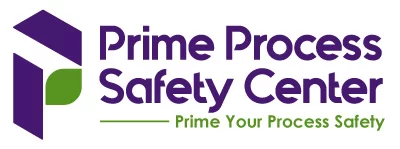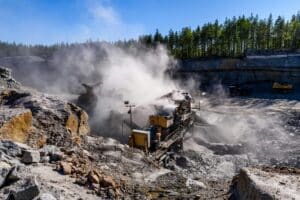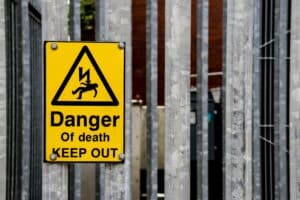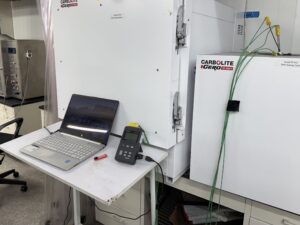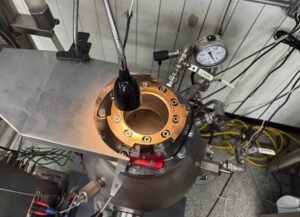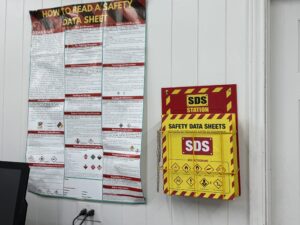Introduction
A Dust Hazard Analysis (DHA) clearly outlines the systematic process of identifying, evaluating, and managing the risks associated with combustible dust. This analysis is especially critical for facilities that handle, process, or store combustible bulk solids, as it helps prevent fires, flash fires (deflagrations), and explosions. By selecting and applying the right dust hazard analysis method, facilities can implement protective measures tailored to their specific operations and risks. Moreover, a well-executed DHA not only reduces the chance of catastrophic incidents but also helps safeguard employees, equipment, and the overall supply chain.
When it comes to choosing the appropriate dust hazard analysis method, it depends largely on the facility’s unique conditions and applicable regulations. Each method, therefore, is designed to meet specific safety goals and align with industry standards. Common types include:
- Prescriptive Based Dust Hazard Analysis
- Risk-Based Dust Hazard Analysis
- Performance-Based Dust Hazard Analysis
- Hybrid Dust Hazard Analysis (DHA)
Prescriptive Based Dust Hazard Analysis
A Prescriptive-Based Dust Hazard Analysis, by design, follows established guidelines and standards to systematicallyevaluate and mitigate combustible dust hazards in industrial environments. Through this structured approach, analysts rely on predetermined criteria to consistently identify potential hazards and then implement corresponding preventive measures. Typically, the process includes the following key steps:
-
Gathering facility information
-
Identifying applicable regulations
-
Evaluating dust characteristics
-
Reviewing equipment and controls
-
Developing mitigation measures
-
Documenting findings and recommendations
By following these steps, organizations can proactively mitigate risks and maintain safety standards.
Advantages:
-
Clear Guidelines: Provides structured steps aligned with regulatory standards.
-
Time Efficiency: Saves time by using predefined protocols, helpful for facilities with limited resources.
-
Consistency: Ensures a standardized approach across different sites or teams.
-
Regulatory Compliance: Helps demonstrate adherence to industry regulations.
-
Industry Acceptance: Based on well-recognized standards, enhancing credibility with stakeholders.
Disadvantages:
-
Limited Flexibility: May not accommodate unique or complex processes.
-
Risk of Overlooked Hazards: Prescriptive methods may miss facility-specific issues.
-
False Sense of Security: Compliance doesn’t always equal comprehensive safety.
-
Limited Innovation: Rigid guidelines can inhibit new, more effective safety strategies.
-
Complex Implementation: May still require specialized training for accurate application.
Risk-Based Dust Hazard Analysis
A Risk-Based Dust Hazard Analysis (RB-DHA) moves beyond rigid standards to assess facility-specific hazards and their potential consequences. It starts with identifying dust-related risks—such as ignition sources and dust accumulation—while also evaluating variables like particle size, moisture content, and chemical composition. Once these hazards are identified, a thorough risk assessment follows, often incorporating historical data and expert judgment to better prioritize mitigation efforts based on likelihood and severity.
Importantly, consequence analysis plays a key role, examining potential impacts on personnel, structures, and the environment. With these insights in hand, organizations can then develop risk mitigation strategies, including engineering controls, administrative procedures, and PPE. Finally, ongoing review and monitoring are essential to ensure continued effectiveness and to adapt to any changes in processes or materials over time.
Advantages:
-
Customized Approach: Tailored to the facility’s unique characteristics.
-
Comprehensive Risk Assessment: Evaluates all relevant factors beyond prescriptive requirements.
-
Prioritized Risk Management: Helps allocate resources based on greatest need.
-
Flexibility: Adapts to changes in processes, technology, and regulations.
-
Continuous Improvement: Encourages regular updates and proactive safety management.
Disadvantages:
-
Subjectivity: Judgments can vary between assessors.
-
Complexity: Requires significant technical knowledge.
-
Resource Intensive: Demands time, data, and expertise.
-
Data Availability: Effectiveness depends on access to accurate, detailed information.
-
Compliance Challenges: Must still align with applicable regulations.
Performance-Based Dust Hazard Analysis
A Performance-Based Dust Hazard Analysis (PB-DHA) emphasizes achieving safety outcomes based on specific facility goals rather than simply following standard checklists. The process begins by defining safety performance objectives—such as controlling dust concentrations, preventing ignition, and ensuring personnel protection.
Hazard scenarios are analyzed in light of these goals, and existing safeguards are measured against performance criteria. Any gaps identified lead to customized mitigation strategies, including engineering upgrades, procedural improvements, and training. Ongoing evaluation ensures continuous alignment with safety targets.
Advantages:
-
Customization: Tailored to the facility’s operations, risk tolerance, and safety culture.
-
Flexibility: Encourages innovative solutions beyond regulatory minimums.
-
Performance Focus: Targets specific safety outcomes instead of compliance alone.
-
Continuous Improvement: Regular reviews lead to progressive enhancements.
-
Holistic Risk Management: Considers organizational, operational, and technical factors.
Disadvantages:
-
Complexity: May be difficult for organizations with limited experience or resources.
-
Subjectivity: Performance goals and evaluation criteria can vary between stakeholders.
-
Data Requirements: Relies on high-quality, comprehensive information.
-
Regulatory Balancing: Must still comply with relevant codes and standards.
-
Measurement Challenges: Defining and verifying success can be difficult.
Hybrid Dust Hazard Analysis
A Hybrid Dust Hazard Analysis (HDHA) combines prescriptive, risk-based, and performance-based methods to thoroughly evaluate and mitigate combustible dust hazards in industrial environments. It begins with meticulous hazard identification, integrating prescriptive guidelines, historical data, and expert insights to capture all potential risks. Next, a comprehensive risk assessment uses both qualitative and quantitative techniques to prioritize hazards based on severity and likelihood, aligning with risk-based analysis principles for efficient resource allocation.
In parallel, performance-based criteria are developed and used to evaluate existing controls, identify gaps, and guide targeted improvements. Based on these findings, tailored mitigation strategies are implemented, blending engineering controls, administrative procedures, training, and equipment updates. Following implementation, ongoing monitoring and periodic reviews ensure these strategies remain effective amid changes in processes, regulations, or best practices.
Moreover, thorough documentation and communication with stakeholders promote transparency and accountability throughout the DHA process. By integrating diverse analytical methods, the hybrid approach strengthens workplace safety and reduces the risk of dust-related incidents. The figure below outlines a typical hybrid DHA framework, incorporating both qualitative and quantitative steps.
Advantages:
-
Integration of Approaches: Leverages strengths from all three methodologies.
-
Customization and Flexibility: Adapts to the facility’s unique needs.
-
Holistic Risk Management: Captures a wide range of hazard types.
-
Balanced Strategy: Aligns compliance with performance-driven improvements.
-
Supports Continuous Improvement: Encourages iterative evaluation and upgrades.
Disadvantages:
-
Complex and Resource Intensive: Can be demanding to implement and maintain.
-
Subjectivity and Interpretation: May lead to differences in priorities or solutions.
-
High Data Requirements: Effectiveness depends on availability and accuracy of data.
Conclusion
Conducting a Dust Hazard Analysis (DHA) is a critical step in identifying and mitigating the fire and explosion risks posed by combustible dust. This process is essential for compliance with safety regulations and standards, including OSHA’s Combustible Dust National Emphasis Program (CPL 03-00-008) and various NFPA codes. Industries such as food processing, pharmaceuticals, metalworking, and woodworking often generate hazardous dust and must take proactive measures to manage it safely.
By selecting the appropriate dust hazard analysis method, facilities can assess the potential for dust explosions, evaluate the effectiveness of existing controls, and implement additional safeguards where needed. This not only improves worker safety but also protects equipment, reduces downtime, and promotes operational reliability. A well-executed DHA methodology is more than a compliance exercise—it is a proactive strategy that enhances overall industrial safety and efficiency.

